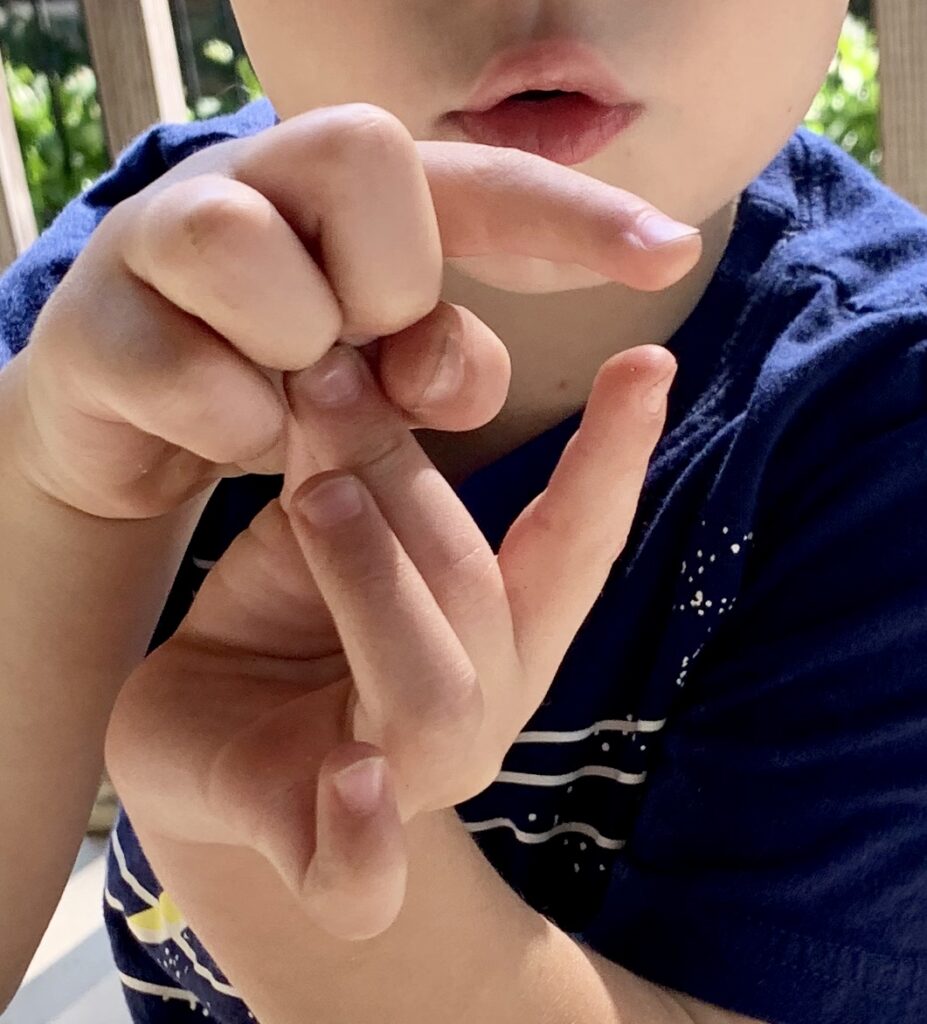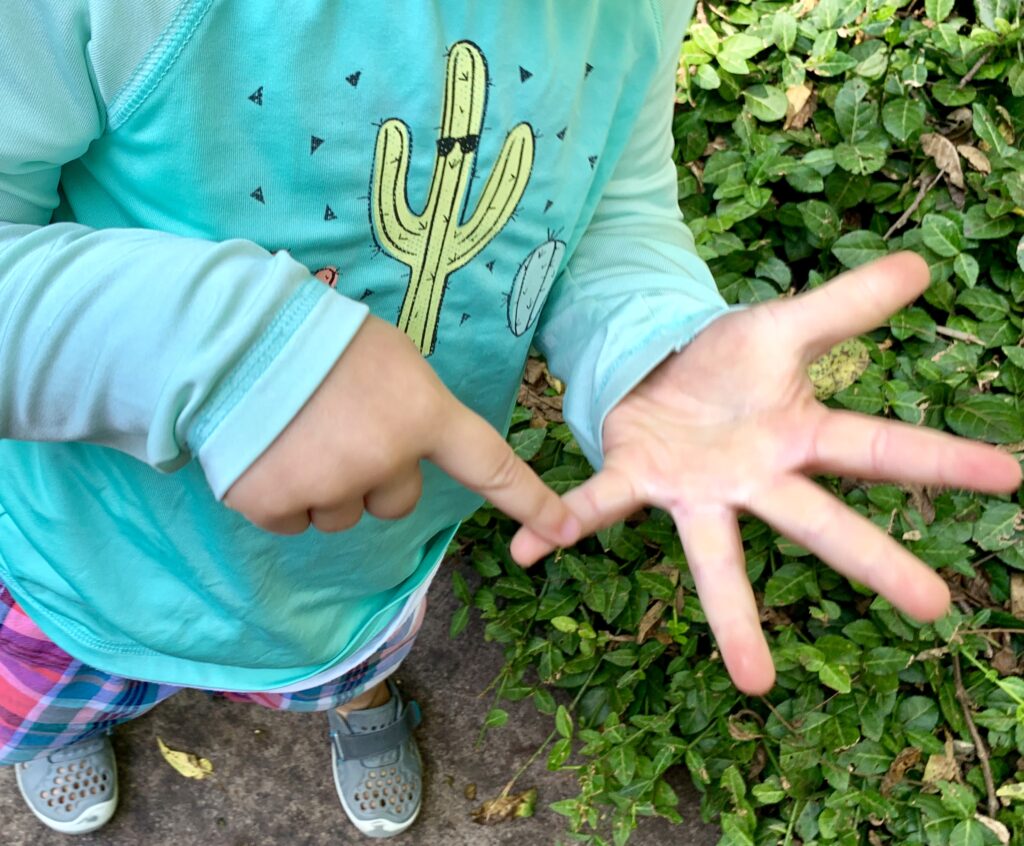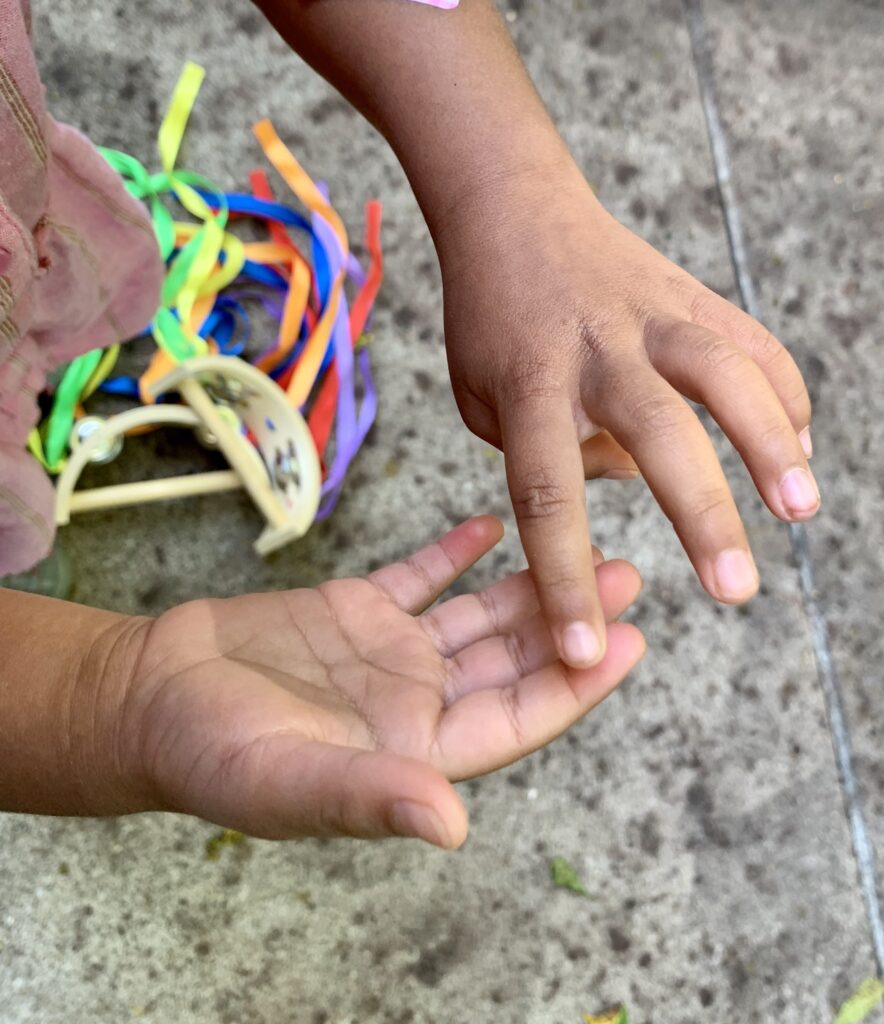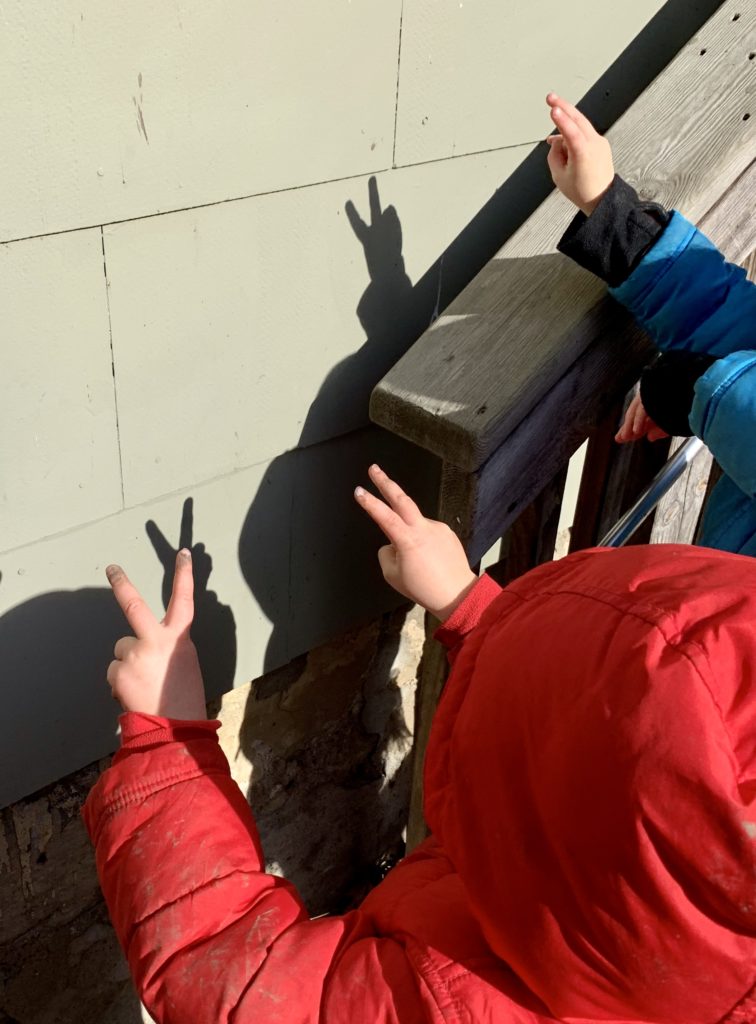Fingers, Fingers, 1-2-3!

“Fingers, fingers, 1-2-3…how many fingers do you see?”
We are playing one of our favorite finger games. I hide one hand behind my back. When I bring it forward, I hold up some fingers and the children shout out the number of fingers that they see.
“Three!” shout the friends playing the game.
Finger games can be played anywhere at any time because our fingers are always, well…handy! Besides, there’s a lot of math to be learned in those little fingers. Fostering a love of math in children begins with building a basic understanding of numbers.
I watch as two-year-old Jade repeatedly looks at his fingers and then back at mine as he attempts to duplicate my patterns. Children learn through their senses, and Jade is visually and physically working his way through an early math skill. He is also engaging in a sensory-motor experience that helps build abstract thinking skills.

When children engage in finger play, sing counting songs and play counting games, they are building a strong number sense. Number sense is a person’s ability to understand key math concepts such as quantities and the numbers that represent those quantities, as well as concepts such as more or less. Children with good number sense can think flexibly and fluently about numbers.
While using his fingers, Jade can feel and see the difference between the numbers 2 and 4. This developmentally appropriate math game is helping Jade connect a quantity to its numeric name—and his vocabulary is growing as he chants along with the rhyme.
Compelling new studies are also revealing how hands literally “help the brain think.” According to the website Science Translated—which educates students and the public about ongoing scientific research in a simple, jargon-free way—”Children clearly ‘think’ with their hands while learning to count.”
Neuroscientists and educators agree: Children who learn to use their fingers as a mathematical tool in the early years experience more success in math than those who don’t.

When children use their fingers to count, they are strengthening their number knowledge and their ability to visualize numbers in their minds. Counting is more complex than simply memorizing and reciting number words. Children need to understand the counting sequence, as well as one-to-one correspondence, cardinality and subitizing.
- Counting sequence: Counting involves using the same sequence each time, starting with one.
- One-to-One Correspondence: Exactly one number from the counting sequence is assigned to each object in the collection.
- Cardinality: The last number assigned to an object when counting the collection indicates the total quantity of objects in the collection.
- Subitizing: The ability to recognize a small group of objects without counting.
Watching and listening to children’s counting will help you see what they know and what they still need to learn. Once the children have a strong understanding of the numbers up to five, try adding your other hand to the game. For example, I show two fingers on my right hand and three fingers on my left hand. The children have to add the two sets of numbers to give me a total number.

“1- 2-3, let me see…the number two!”
We also use our fingers to play with shadows. Using the sun as a light source, I call out a number. The children then hold up the appropriate number of fingers to represent that number, casting “finger shadows” on a wall or on the sidewalk.
This is a great way to help children build their number sense. It allows the children to work on:
- Finger-isolation activities such as pointing with the index finger, counting out the fingers on their hands or wiggling all of their fingers individually
- Thumb-opposition activities such as touching the thumb to each finger to build strength and dexterity for pencil-holding and cutting with scissors
These are all good reasons to add some finger play to your days! Keep it fun, keep it spontaneous and keep it simple. What looks like child’s play will help build a strong foundation for later math learning. You can count on that!
Fingers are a great way for early learning. Unfortunately, our school district discourages fingers for counting
Such a playful and engaging way to count with one to one correspondence or subitizing.
Fingers are the best way to start when it comes to introducing math to the little kids because it shows that with them counting their fingers they get a start on understanding how many things are in the world like example how many fingers you have.
Even the youngest child can relate to using their fingers for counting and pointing and other activities.
Best tool a child has & always with them. I can’t imagine a school discouraging the practice.
I love this ideas. I enjoyed watching children trying to make the fingers move as they are trying to understand how it works. It is fun to watch as you teach baby sign languages too. Awesome ideas.
Counting with fingers is probably the easiest and fun way to help children when It comes to counting
love this activity
I didn’t know that teaching children to count with their fingers was so important for number sense. Thanks for the activities that will help me to share math sense with our children.
Using the fingers is a great idea for a foundation in math.
Finger counting is a great way to introduce one-to-one correspondence.
Finger counting is a great way to introduce one-to-one correspondence. It is a great way for students to be able to visually see and touch what they are counting.
wow so i loved this blog because i remember when i first learned too use my fingers to count i thought i was a genius lol i loved it and now my daughters are using their fingers to count its something thats quick and easy to get to.
finger counting is a gtreat way for children to learn math.
fingerplays are basic to start counting all my toddlers love it
The basis formed from counting fingers can lead to much more elaborate and number systems for children even in of older ages. I once taught middle school students to rehearse their multiplies using the same finger sequence I used to employ with fives and tens. They recalled them much quicker doing that.
Lamont Jackson
very cute! what better way to start the basics
Some really simple but great ideas here!
Not realizing I finger play everyday during circle when we count to 3 and I model.
One of the easeast games kids would love
Finger play is a great way for counting and a way to introduce one to one correspondence.
This is a great reminder of how important finger counting is for young children. I especially like the idea of using sunlight and shadows to show “how many ” with fingers. An add-on idea might be to trace finger shadows and write the number next to it.
Fun and easy play to introduce counting without realizing it’s math!
I love this game as a way to engage the children while they have to wait in a line for the restroom or whatever we are waiting for!
Thank you for sharing the importance of using fingers to count as a vital step in learning early math skills. I love the idea of incorporating outdoor shadow play into a learning activity.
Having the young children use their hands/ fingers to count is such a fun way to get things done.